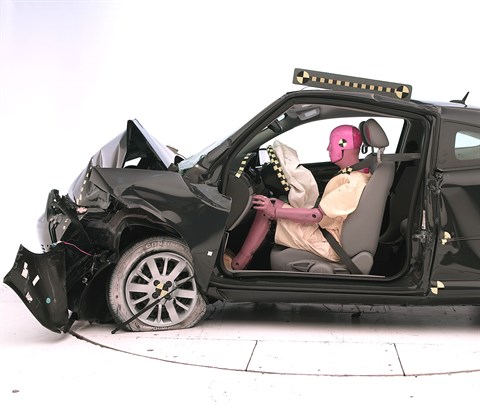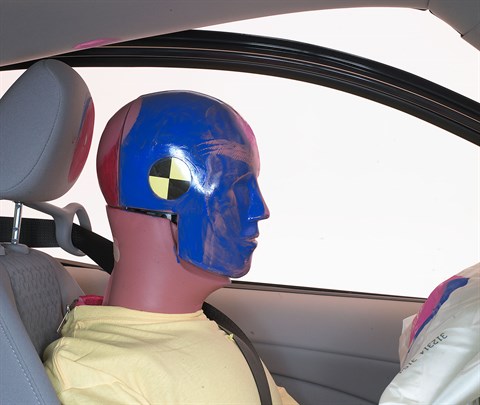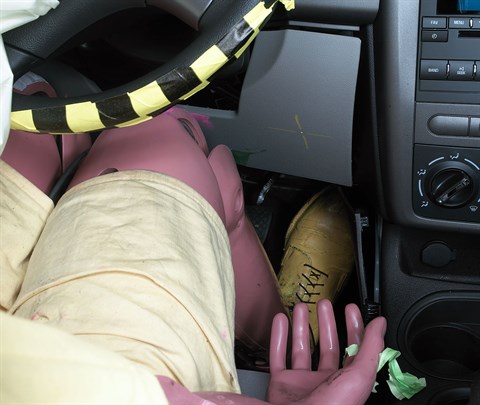Moderate overlap front: original test
Rating applies to 2005-10 models
Tested vehicle: 2009 Chevrolet Cobalt LS 2-door
The Chevrolet Cobalt was introduced in the 2005 model year, and the Pontiac G5 (available only as a 2-door) was introduced in the 2007 model year. The Pontiac G5 was discontinued after the 2009 model year and the Cobalt after the 2010 model year.
| Evaluation criteria | Rating |
|---|---|
| Overall evaluation | |
| Structure and safety cage | |
| Driver injury measures | |
| Head/neck | |
| Chest | |
| Leg/foot, left | |
| Leg/foot, right | |
| Driver restraints and dummy kinematics | |

Action shot taken during the frontal crash test.

The dummy's position in relation to the steering wheel and instrument panel after the crash test indicates that the driver's survival space was maintained reasonably well.

Smeared greasepaint indicates where the dummy's head hit the roof rail and head restraint during rebound. Head accelerations from these hits were negligible.

Forces on the lower right leg were high enough to indicate the possibility of injuries.
Head restraints & seats
Seat type: Manual cloth seats
| Overall evaluation | |
|---|---|
| Dynamic rating | |
| Seat/head restraint geometry |
About the head restraint & seat test
Currently, IIHS tests apply only to front seats.